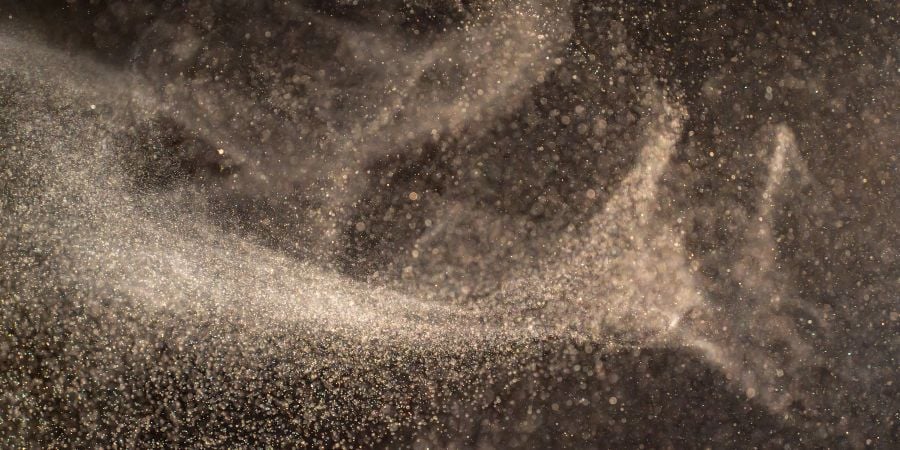Share this
5 Ways Indoor Air Contaminants Are Affecting Your Healthcare Facility
by HEPACART on Dec 02, 2024

As a healthcare facility manager, you understand that maintaining optimal indoor air quality is more than just adhering to compliance and regulatory standards. It's about ensuring the health and safety of your patients and staff every single day. Poor indoor air quality can lead to increased infection rates, non-compliance with health regulations, and a host of other issues that can negatively impact your facility's reputation and effectiveness. In an era where public health concerns are critical, neglecting air contamination can have far-reaching consequences, including legal liabilities and loss of patient trust.
Yet, challenges with air contamination often go unnoticed in the daily hustle of facility operations. Subtle signs like musty odors, unexpected dust accumulation, or occasional complaints from patients and staff might hint at underlying indoor air contaminants that need your attention. Recognizing and addressing these issues proactively can significantly enhance patient outcomes, improve staff productivity, and reduce operational costs associated with health complications and regulatory fines.
5 Common Sources Compromising Air Quality in Healthcare Facilities
Even the most well-maintained facilities can face air contamination issues stemming from sources that aren't immediately obvious. These issues can arise from routine operations, maintenance activities, or external factors beyond your immediate control. Understanding these sources is crucial in developing effective pollution control strategies. Let's explore five common indoor air contaminants that might be affecting your facility and discuss thoughtful strategies to solve the problem and mitigate the risks.
Contaminant Source #1: Construction and Renovation Activities
Problem
Construction and renovation projects, while necessary for facility improvement and expansion, can inadvertently introduce dust, debris, and harmful particles into your indoor environment, compromising air quality.
During these activities, construction crews may disturb existing structures, releasing microscopic particles like mold spores, asbestos fibers, silica dust, and fine particulate matter into the air. Without proper pollution control measures, these indoor air contaminants can infiltrate your ventilation systems, spreading to sensitive areas such as patient rooms, surgical suites, and neonatal intensive care units.
This not only poses significant health risks to patients with compromised immune systems but can also lead to violations of infection control protocols and accreditation standards, potentially resulting in costly penalties, legal actions, or loss of accreditation.
Solution
Implement advanced dust containment systems equipped with HEPA filtration to ensure that construction zones are effectively isolated from the rest of the facility. Equipment like the Mintie ECU4 units, DUSTBUGGY®, HEPACART®, or AnteRooms are specifically designed for healthcare settings and can capture airborne pathogens and other indoor air contaminants at the source.
By using these air filtration systems, you prevent air contamination, protect vulnerable patient populations, and help your facility remain compliant with stringent guidelines from organizations like the CDC, OSHA, and ASHRAE. Additionally, conducting regular indoor air quality monitoring during construction activities provides real-time feedback, ensuring that your pollution control measures are effective and that any needed adjustments can be made promptly.
Contaminant Source #2: Inefficient Ventilation Systems
Problem
Outdated or poorly maintained ventilation systems can recirculate contaminated air, leading to stagnant environments where pathogens thrive.
Proper ventilation is crucial for effective indoor air quality management. If air exchanges are inadequate, bacteria, viruses, fungi, and other airborne pathogens can accumulate in the environment. This not only increases the risk of healthcare-associated infections (HAIs) but can also strain your HVAC systems, leading to higher operational costs, increased energy consumption, and potential system failures. Moreover, inadequate ventilation can result in uneven temperature control and humidity levels, further contributing to an environment conducive to pathogen growth.
Solution
Upgrade your ventilation infrastructure to include HEPA filtration, which captures 99.97% of particles as small as 0.3 microns. Investing in modern air filtration systems with built-in HEPA filters can significantly improve healthcare air quality throughout the facility. Establish regular maintenance schedules for filter replacements, duct cleaning, and system inspections to ensure everything is functioning optimally.
Integrating air pressure monitoring systems can also help maintain appropriate airflow patterns — positive pressure in clean areas and negative pressure in contaminated areas — which is essential for infection control in critical care areas. Consider collaborating with HVAC professionals who specialize in healthcare facilities to design a system that meets your specific needs and complies with regulatory standards.
Contaminant Source #3: High-Traffic Areas and Patient Flow
Problem
Busy areas like lobbies, emergency departments, and corridors can introduce and spread outdoor pollutants throughout your facility.
Patients, visitors, and staff can inadvertently bring in dust, pollen, and microbial contaminants. The constant movement in these spaces facilitates the rapid spread of airborne pathogens, potentially compromising sterile zones and putting vulnerable patients at risk.
Solution
Place portable HEPA air purifiers strategically in high-traffic zones. These air filtration systems continuously filter the air, capturing contaminants as they enter. Consider models with activated carbon filters to also remove odors and chemical pollutants.
Additionally, installing air curtains at entrances can create an invisible barrier that reduces the infiltration of outdoor air contaminants. Implementing strict entry and exit protocols, such as designated pathways and hand hygiene stations, can further reduce air contamination. Regular indoor air quality assessments in these areas can help you identify issues early and take proactive steps. Educate staff and visitors on the importance of these measures to ensure compliance and maximize effectiveness.
Contaminant Source #4: Opportunities to Enhance Cleaning Practices
Problem
While surface cleaning is essential, more thoroughly addressing airborne contaminants can take your facility's hygiene to the next level.
Airborne pathogens like certain bacteria and viruses can linger in the air, especially in areas with poor ventilation. Relying solely on surface cleaning might leave these airborne risks unaddressed, potentially exposing patients and staff to infections that standard disinfection practices miss.
Solution
Incorporate HEPA filtration systems into your cleaning regimen to target airborne contaminants effectively. Installing devices like HEPAFORCE® GermBuster Room Air Purifiers in critical areas can continuously remove harmful indoor air contaminants, enhancing overall healthcare air quality. These units can be particularly beneficial in patient rooms, isolation areas, and procedure rooms.
Training your environmental services team on the importance of air purification complements existing cleaning protocols and strengthens your overall infection prevention strategy. Consider implementing ultraviolet germicidal irradiation (UVGI) systems as an additional layer of pollution control, as they can deactivate microorganisms that pass through the air handling systems.
Contaminant Source #5: Use of Chemical Cleaners and Disinfectants
Problem
Some chemical cleaners and disinfectants release volatile organic compounds (VOCs) into the air, negatively impacting air quality and potentially causing health issues.
VOCs from harsh chemicals can lead to headaches, respiratory irritation, and dizziness among patients and staff. In poorly ventilated spaces, these compounds can build up to levels that may violate occupational safety guidelines and compromise indoor air quality.
Solution
Switch to low-VOC or VOC-free cleaning products to promote a healthier indoor environment without compromising on disinfection efficacy. Work with your procurement and environmental services teams to source eco-friendly products that meet infection control standards while minimizing VOC emissions.
Using HEPA filtration systems can also help remove any residual airborne chemicals and odors, improving overall healthcare air quality. Additionally, ensure that cleaning staff are trained on proper dilution and application techniques to minimize unnecessary chemical use. Consider scheduling intensive cleaning activities during off-peak hours to reduce exposure and enhance ventilation during and after these tasks.
Protect Against Indoor Air Contamination With Powerful HEPA Equipment

Maintaining excellent indoor air quality requires vigilance and proactive measures. By addressing common sources of air contamination — like construction activities, ventilation issues, high-traffic areas, opportunities in cleaning practices, and the use of chemical cleaners — you can improve patient safety, staff well-being, and regulatory compliance.
Enhance your understanding of advanced air filtration technologies by downloading our comprehensive HEPA vs. ULPA Guide. This resource offers in-depth information on how these systems can protect your facility from airborne contaminants and help you maintain the highest standards of care.
By embracing these strategies, you're reinforcing your commitment to excellence in healthcare delivery and creating a safer, healthier environment for everyone who enters your facility. Taking proactive steps today can lead to less air contamination, higher staff satisfaction, and better operational efficiency in the long run.

